Start date July 26, 1988 | End date July 1988 | |
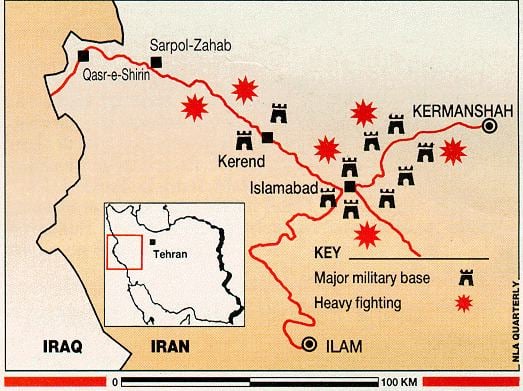 | ||
7,000 MEK troops90,000 Iraqis engaged900,000 total300 tanksunknown number of artillery pieces and aircraft 210,000 Iranians engaged1,200,000 total365 tanksunknown number of artillery pieces and aircraft Similar Iran–Iraq War, Operation Beit ol‑Moqaddas, Operation Dawn 8, Siege of Basra, Operation Kheibar | ||
Operation Mersad (Persian: عملیات مرصاد, meaning "ambush") was the last major military operation of the Iran–Iraq War, ending in a decisive victory for Iran. The operation involved a successful counterattack against a July 1988 military incursion from Iraq, by a military force of about 7,000 members of the Mujahadeen-e-Khalq (MEK). The MEK soldiers were armed, equipped and given air support by Iraq. Led by Lt. General Ali Sayad Shirazi, Operation Mersad began on 26 July 1988 and lasted only a few days, where the Iranian Armed Forces crushed the MEK in what was the last military operation of any significance of the war.
Contents
- Operation mersad large heated the hearts of the enemies and make sure to watch mek
- Prelude
- MEK launches Operation Forough Javidan
- Aftermath
- References
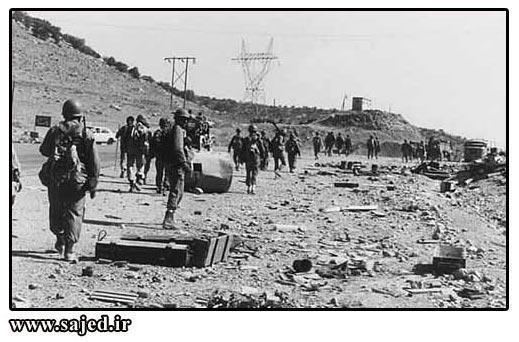
Both Iran and Iraq had accepted United Nations Security Council Resolution 598, which would end the war on 20 July 1988. However, shortly thereafter the Iraqi-supported Mujahedeen-e-Khalq militant group attacked central Iran. The attack was decisively defeated by the Iranian military.

Operation mersad large heated the hearts of the enemies and make sure to watch mek
Prelude

After almost eight years of bloody warfare, the Iran-Iraq War was coming to an end under the United Nations Security Council Resolution 598, which was passed 20 July 1987. Iran had suffered major defeats in southern Iraq during the Second Battle of Al Faw and Operation Tawakalna ala Allah, and was contemplating on accepting the ceasefire. However, made confident by recent Iraqi victories, Saddam Hussein decided to violate the ceasefire talks/procedures and let the MEK launch an invasion of Iran itself. On July 26, 1988, six days after the Ayatollah Khomeini had announced his acceptance of the UN brokered ceasefire resolution, the MEK advanced under heavy Iraqi air cover, crossing the Iranian border from Iraq. It advanced to a maximum distance of 145km(90mi) and along the way seized and razed to the ground the Iranian town of Islamabad-e Gharb. As it advanced further into Iran, Iraq ceased its air support and Iranian forces cut off NLA supply lines and counterattacked under cover of fighter planes and helicopter gunships.
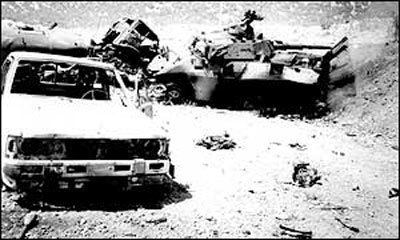
The attack agreed upon by the Iraqi leadership would be a two pronged assault. One portion of the MEK force would attack Iranian forces in Iraqi Kurdistan, the area was still in Iranian and Peshmerga hands. When the Iranian troops moved to fight off the MEK attack in Kurdistan, the renegade Iranian militant group the Mujahedeen-e-Khalq (MEK), supported by Iraqi air power, would launch a large scale incursion into the central portion of Iran, aiming towards the heart of Iran. The MEK under their leader Massoud Rajavi harbored the hope that the attack would lead to a general uprising against the Islamic government of Ayatollah Khomeini. Rajavi would lead the Mujahedeen with Iraqi support in an attack on the western borders of Iran.
MEK launches Operation Forough Javidan
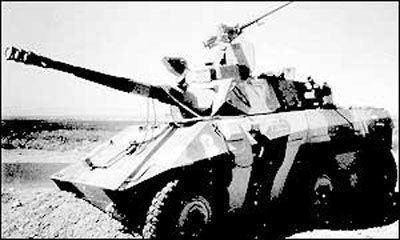
On 26 July 1988, the MEK, with the support of the Iraqi military, started their campaign, Operation Forough Javidan (Eternal Light) in central Iran. The Mujahedeen worked with the Iraqi air force, advancing towards the Iranian city of Kermanshah. With few Iranian troops in the field, the MEK advanced very rapidly, seizing and destroying the towns of Qasr-e Shirin, Sarpol-e Zahab, Kerend-e Gharb, and Islamabad-e Gharb, and pushing towards the provincial capital city of Kermanshah. The Mujahedeen expected the Iranian population to rise up and support their advance; however, the uprising never materialised. Except for an Iranian Kurdish resistance, the Mujahedeen drove through unopposed, pushing 145 km (90 mi) deep into Iran. Although Iran's Kurdish fighters did somewhat manage to slow the Iraqi supported Mujahedeen advance, allowing time for the Iranians to prepare their counteroffensive.
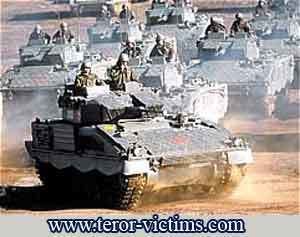
Iran did not launch an immediate attack against the Mujahedeen. Instead they waited until they had advanced beyond the range of effective Iraqi air cover. The MEK continued to advance, reaching as far as 145 km (90 mi) deep into Iran, and the road to Tehran seemed to be wide open.
At this point, the Iranian military launched its counter-attack, Operation Mersad, under Lieutenant General Ali Sayyad Shirazi.
The Iranians had achieved local air superiority as a consequence of their strategy of temporarily giving ground. Iranian paratroopers landed behind the overstretched MEK lines while Iranian Air Force F-4 Phantoms bombed the Mujahedeen vehicles on the Kermanshah highway. Afterwards, Army Aviation helicopters launched an air attack using anti-tank missiles. By this time, most of the enemy armour was destroyed, in a miniature version of the Highway of Death during the Persian Gulf War. The MEK advance had been abruptly and completely halted.
The Iranian army and Revolutionary Guard then moved north from Khuzestan, encircling and suppressing the remaining resistance in the city of Kerend-e Gharb on 29 July 1988.
On 31 July, Iran drove MEK forces out of Qasr-e-Shirin and Sarpol Zahab, though the MEK claimed to have "voluntarily withdrawn" from the towns. Iran estimated that 4,500 Mujahedeen soldiers were killed, while 400 Iranian soldiers died. The Iranian successes during Operation Mersad were partially due to their decision to establish a unified command structure and permanently quash the differences between the Army and the Revolutionary Guard.
Aftermath
Under pressure from other Arab states Saddam and MEK did not launch any more attacks on Iran. Operation Mersad was the last battle of the Iran–Iraq War.
The last notable combat actions of the war took place on 3 August 1988, in the Persian Gulf when the Iranian navy fired on a freighter and Iraq launched chemical attacks on Iranian civilians, killing an unknown number of them and wounding 2,300.
Both sides eventually withdrew to the international border in the coming weeks, with Resolution 598 becoming effective on 8 August 1988, ending all combat operations between the two countries.[102] By 20 August 1988, peace with Iran was restored. UN peacekeepers belonging to the UNIIMOG mission took the field, remaining on the Iran–Iraq border until 1991. While the war was now over, Iraq spent the rest of August and early September clearing the Kurdish resistance. Using 60,000 troops along with helicopter gunships, chemical weapons (poison gas), and mass executions, Iraq hit 15 villages, killing rebels and civilians, and forced tens of thousands of Kurds to relocate to forced settlements.[99] Many Kurdish civilians immigrated to Iran. By 3 September 1988, the anti-Kurd campaign ended, and all resistance had been crushed.[99] 400 Iraqi soldiers and 50,000 Kurdish civilians and soldiers had been killed.
At least in part as a response to the invasion, Iran executed several thousand political prisoners across the country for treason, mainly members of the MEK, but even also some members of the Tudeh Party (Communist Party) and other opposition groups. The estimates for number of executions vary from as little as 1,400 to as high as 12,000. The most likely number was given by dissident Ayatollah Hussein-Ali Montazeri, as being between 3,800–4,500. The death toll may have been higher for those MEK executed by frontline court-martials or dying in prison.
